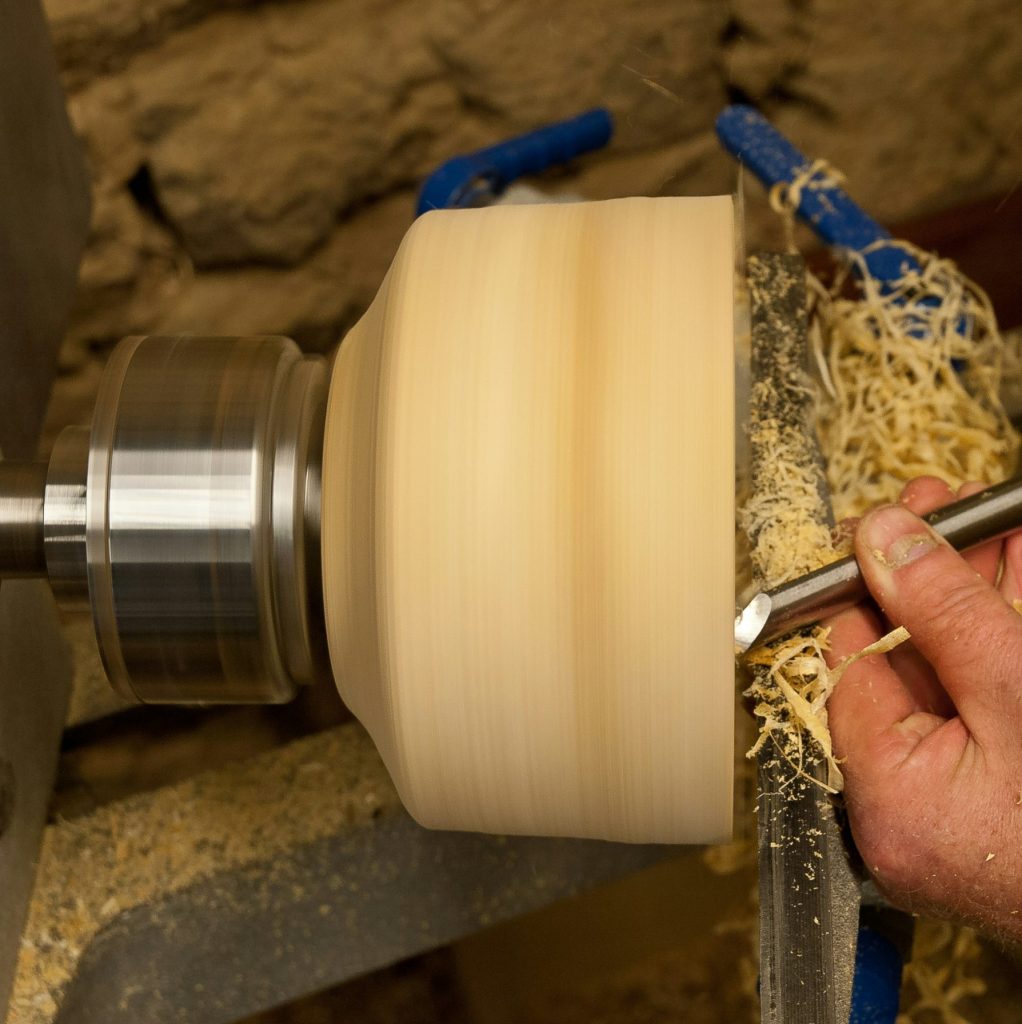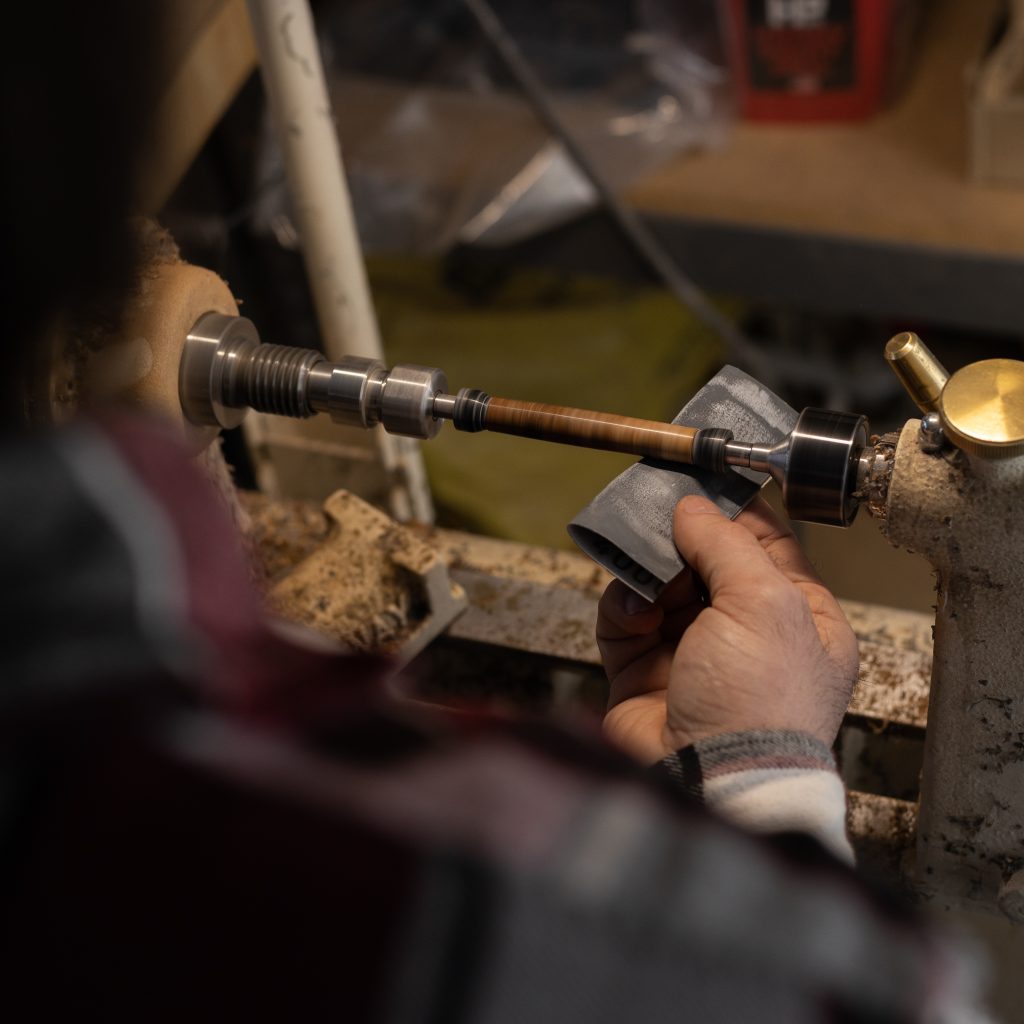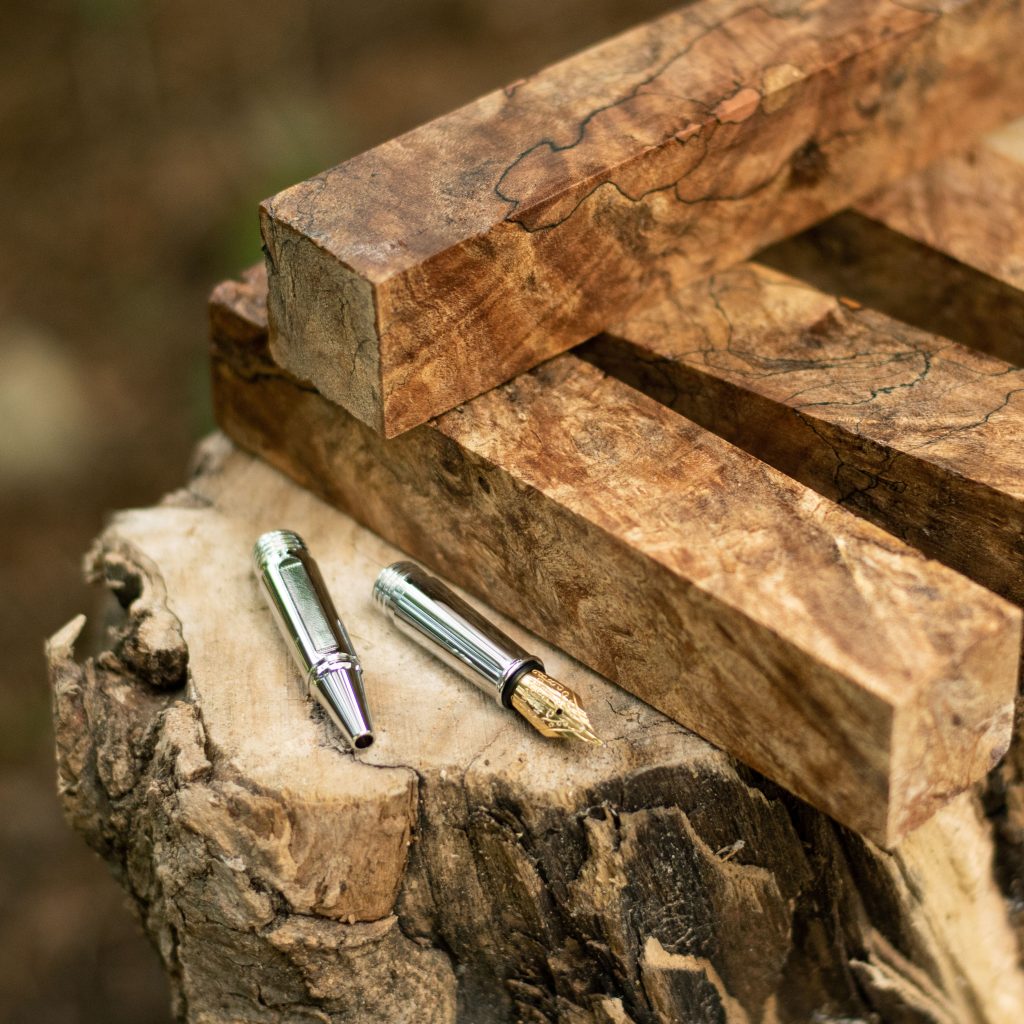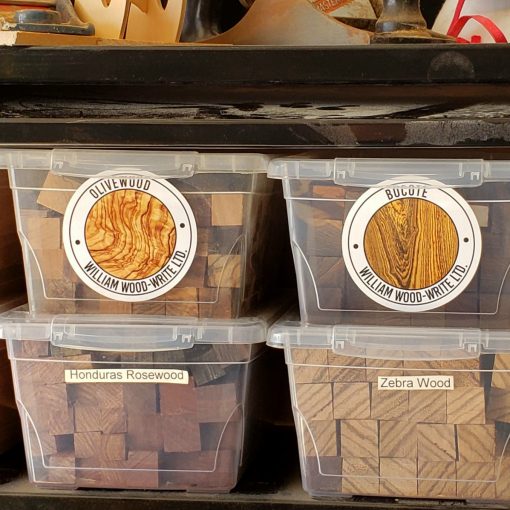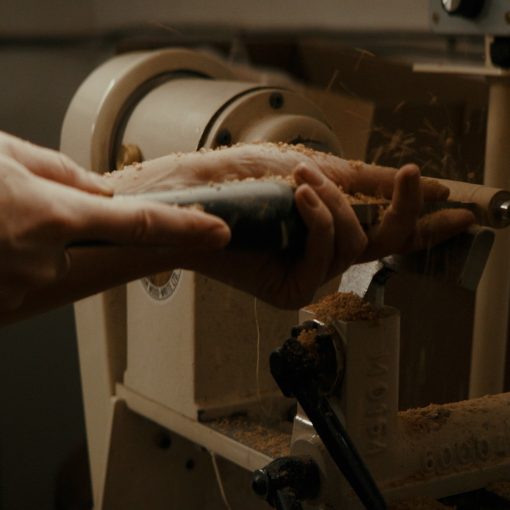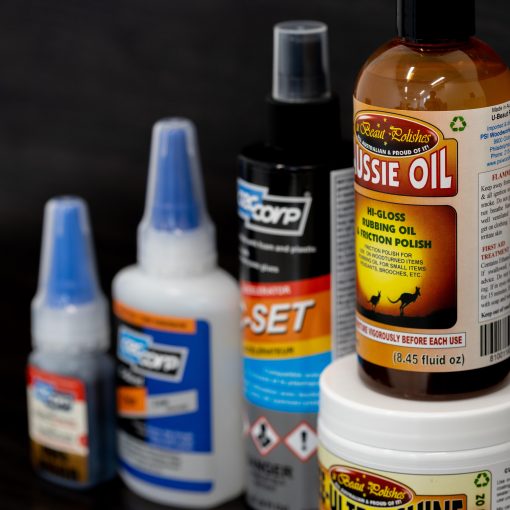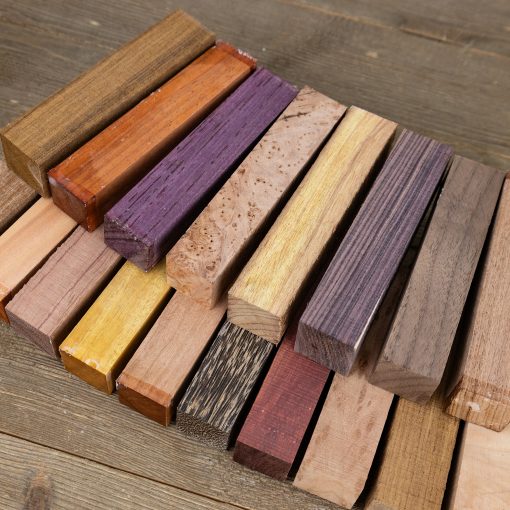In the last 15 years, fountain pen turning kits have been regaining popularity as a very personal, elegant writing tool used for signatures, calligraphy, or special letters and notes. But, before turning your first fountain pen, there are a few things you need to know.
1) Basic Mechanics of a Fountain Pen Kit
Fountain pen kits work by transferring ink from the sealed cartridge or converter pump through a small hole and into the feed (the notched piece that connects the ink cartridge to the actual nib of the pen). The ink then flows through the grove and fins of the feed and then to the tip of the nib. When writing on paper with a fountain pen, the ink is pulled onto the paper by capillary action between the feed fins, feed grove and sealed ink container. This means that the ink is constantly replenishing itself as more ink is used. Your pen blanks are used to disguise the internal workings of your ink cartridge and add beauty to this already intricate nib.
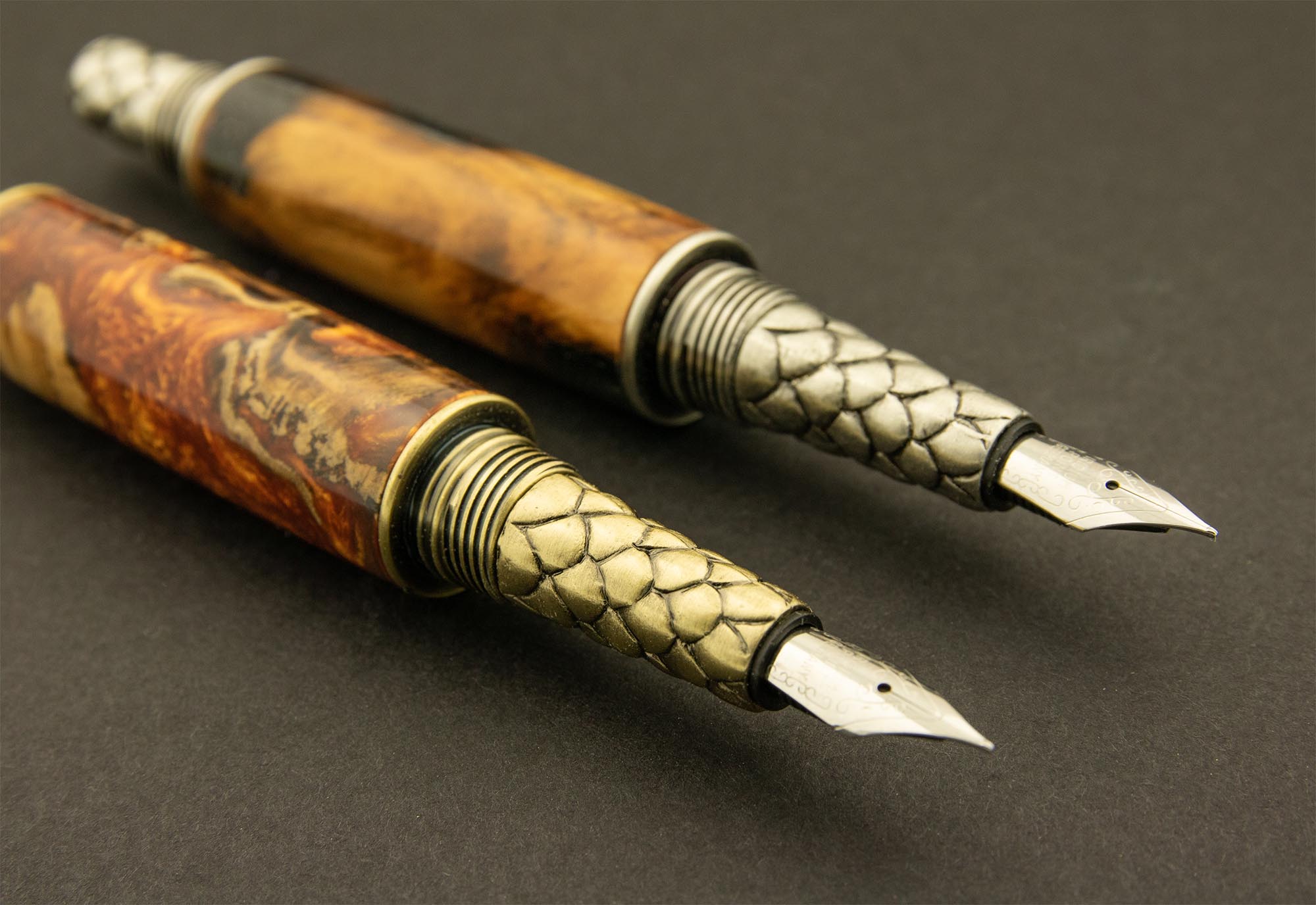
Did you know,
most of our rollerball styles are also available as fountain pens
2) Priming a Fountain Pen Kit
Priming your fountain pen cartridge and pen turning hardware is key when preparing to use it for the first time.
Priming can be done two different ways:
- Squeeze the cartridge so ink comes out of the tip of the nib. Next, clean the nib
and under the feed with a tissue and try writing a few words to test the pen. - Screw the nib and feed assembly onto the pen and then quickly snap the pen down hard so ink comes out of the front of the nib. Next, clean the ink from the nib and under the feed with a tissue. Test and repeat if the pen doesn’t write.
If you are making a pen that uses a converter pump, there are equally as important steps to prepare the pump for use. Insert the open end of the pump into a bottle of ink, slightly submerged. Turn the black ridged piston handle very gently counter clockwise until the piston is at the bottom or open end of the pump. Dip the entire nib into your ink bottle and turn the piston handle clockwise to draw ink up into the pump. Then, clean the nib and bottom of the feed with a tissue and begin writing!
Prefer a visual demonstration? We’ve got a video that shows you exactly how to use an ink pump! Check it out HERE.
3) Maintaining your Fountain Pen Kit
Your fountain pen kit, unlike a traditional ballpoint pen, will occasionally need minor maintenance to its pen making parts to keep the kit it in good working order. If you don’t write with the pen for a few days, the ink may dry up at the tip of the nib, which may result in your pen skipping or not writing at all.
To remedy this, run a small stream of warm water over the tip of the nib for a second or two. If you leave your pen unused for a longer period of time, weeks or months, you may need to use a stronger stream of warm water for a longer period in order to loosen the ink.
The best way to store a fountain pen when not in use is horizontally. If your ink dries out all together, your cartridge will need replacing, so keep in mind Penblanks.ca has all the pen turning supplies you need, including fountain pen refills.
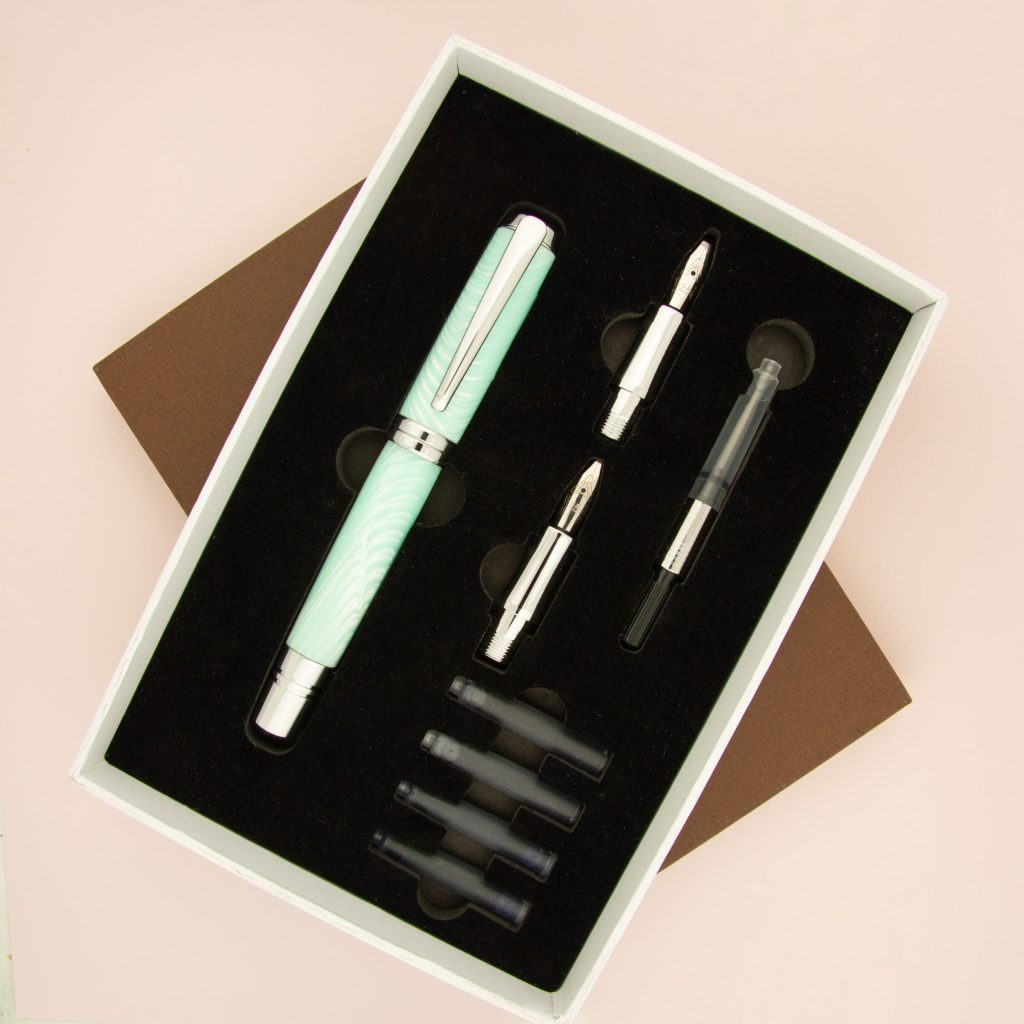
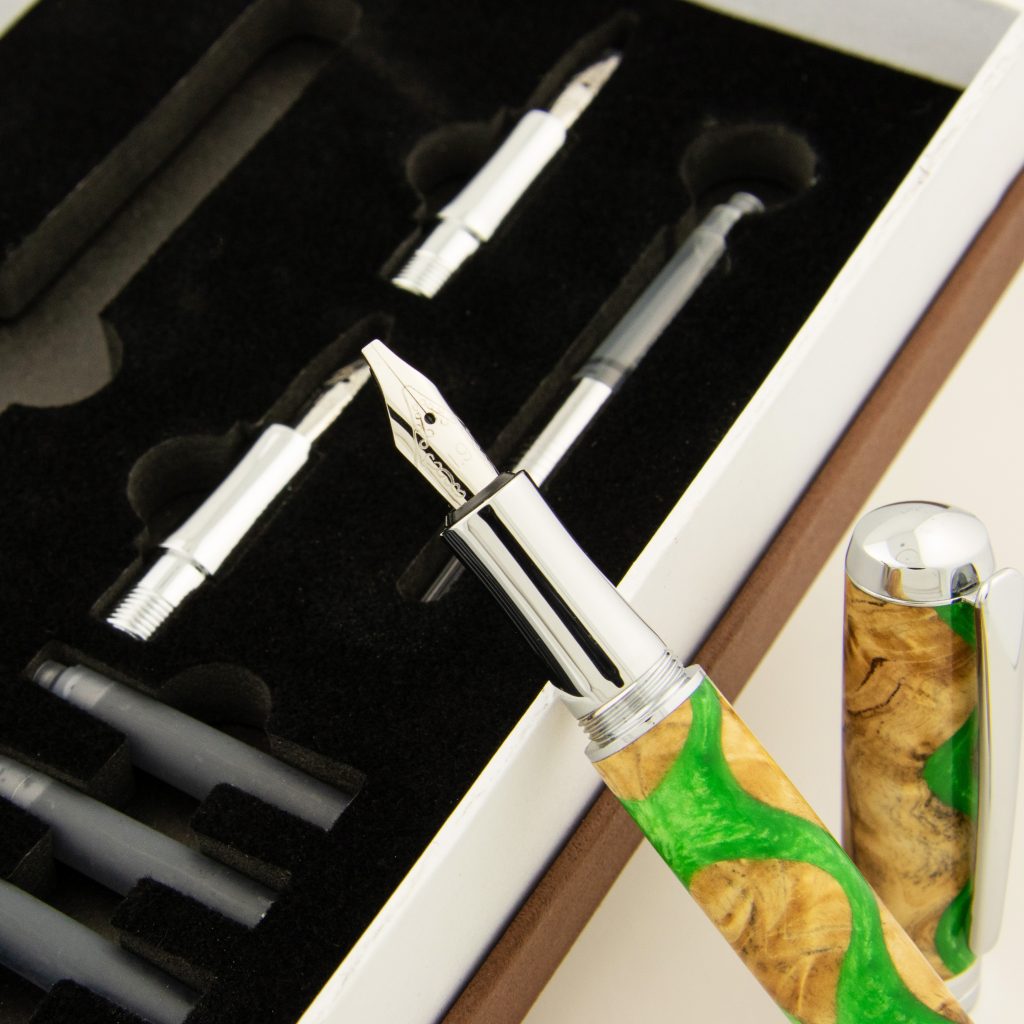
4) Troubleshooting
If your fountain pen will not write, skips or writes a few lines before the ink stops following, check the following:
- If it is the first time the pen is being used and will not write, the pen has not been
properly primed - If this is not the first time the pen is being used, the ink in your pen’s nib may be
dried out. In this case, run a small stream of warm water over the nib. - In extreme cases, you may have to flush the ink out of the nib entirely and
re-prime the pen. - If your fountain pen “glops” ink while writing or a large amount of ink flows onto the
paper, this means your ink holder has lost the vacuum that holds the ink in place within the pen’s grooves, fins and feed. If your pen uses a cartridge, this may be the result
of a very low ink supply. You’ll be able to see exactly how much ink is left in your cartridge. In this case, simply change out your ink cartridge for a new one. - If using a converter pump, ink spurting out is a sure sign the pump is faulty and must be replaced with a new pump, or be changed over to standard pre-filled fountain cartridges.
5) Replacing a Fountain Pen Nib
If the issue is the nib itself, it’s very easy to replace! Just unscrew the nib housing from the front end of your pen kit, then unscrew the nib from the nib housing.
New nibs come with gold trim rings. If the pen itself is not gold plated, the trim ring cab be removed from the new nib and replaced with the original pen kits trim trim. (Just pull downward holding onto the trim ring to remove).
Screw the new nib into the original nib housing and screw the housing back onto the front end of your pen kit.
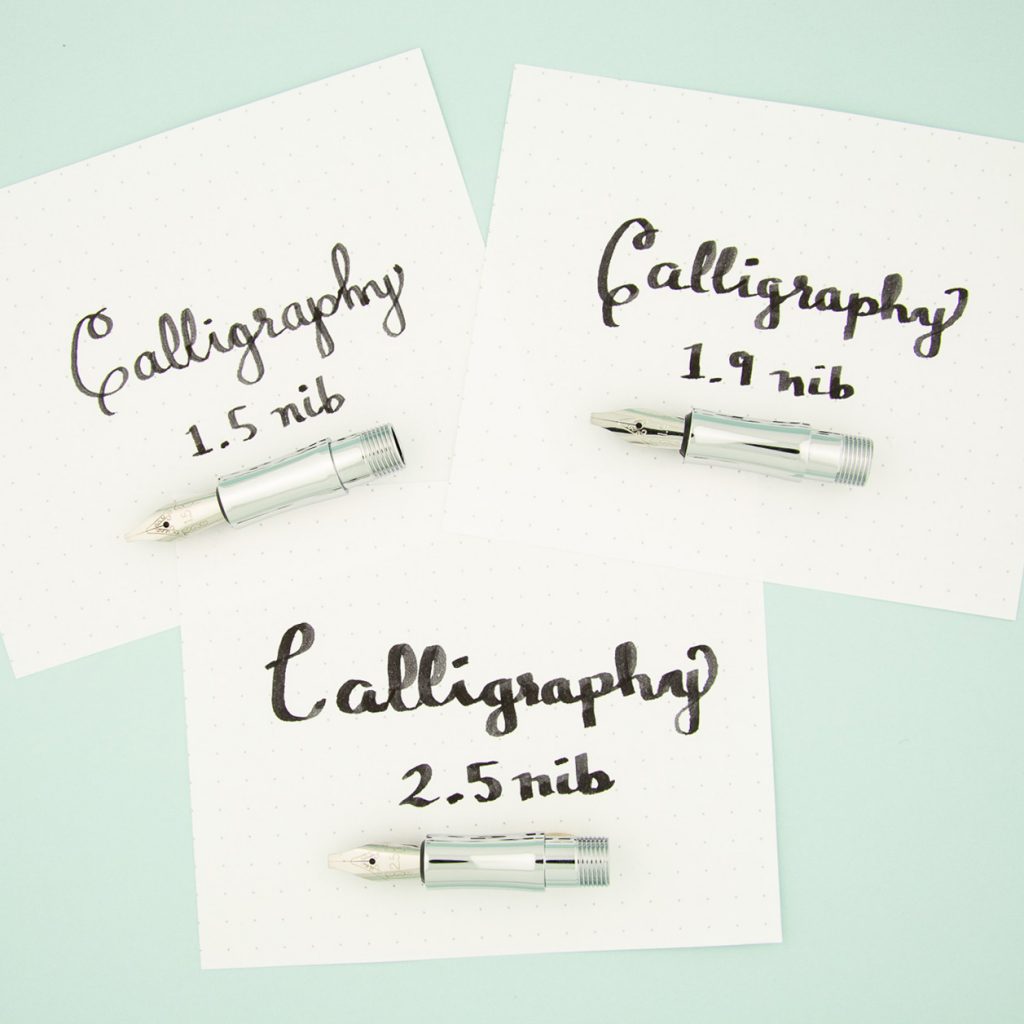
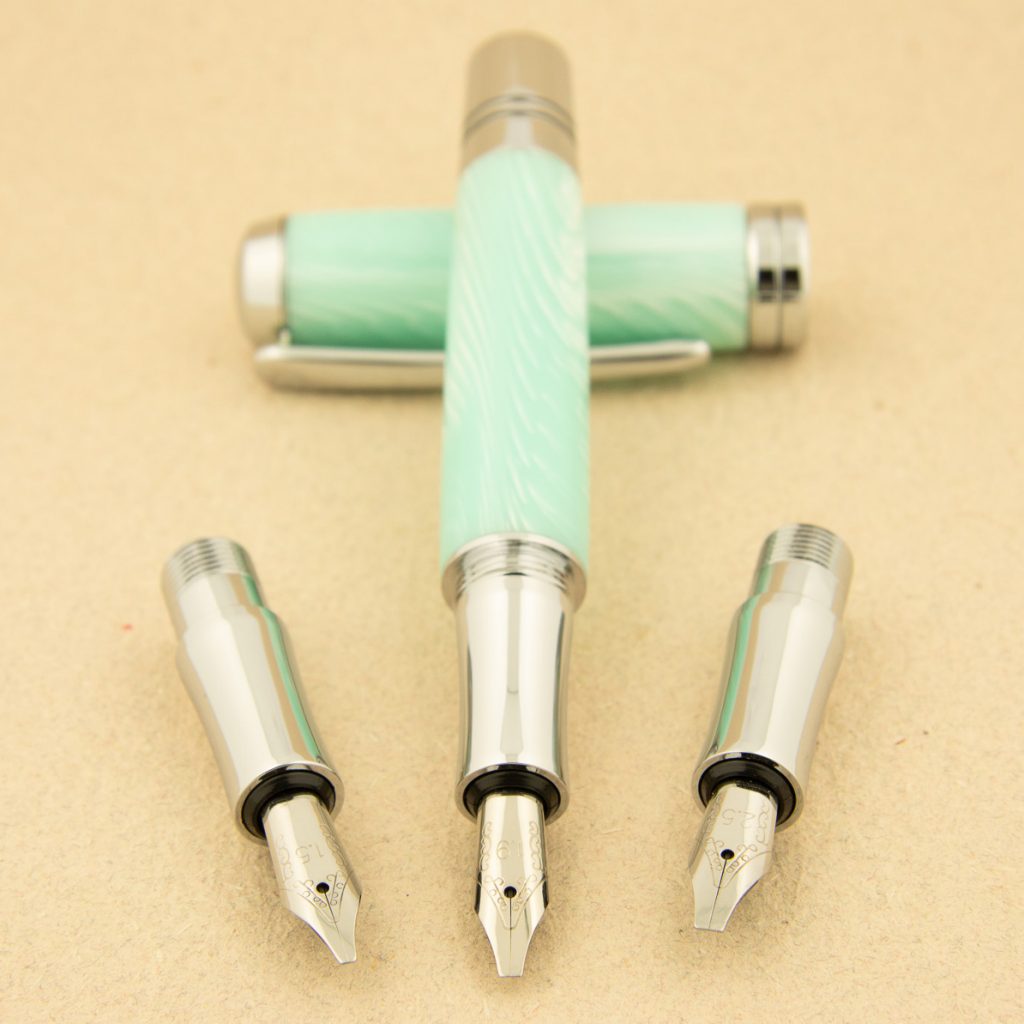
Exclusive to William Wood-Write Ltd.
There are a few styles that share the same style of nib such as the Baron, Sedona, Virage and Triton. You can find these in fine, medium and broad tips.
We’ve got a huge variety of modern and antique style fountain pen turning kits and pen blanks in Canada that are ready to ship, so no need to worry about duty or customs! The art of writing and wood pen turning go hand and hand. An exotic wood pen blank, acrylic pen blank or a Fusion material all pair beautifully with a fountain pen kit.
If you’re not sold on the idea of a fountain pen and want to explore other pen making kits we’ve got rollerballs and ballpoint pen making kits in spades. Shop by pen design here.
Subscribe to our newsletter to get all the deals! We promise we won’t bother you – only two emails a week! One on Sunday to enjoy with your morning coffee, and an how-to email on Wednesday afternoon.
